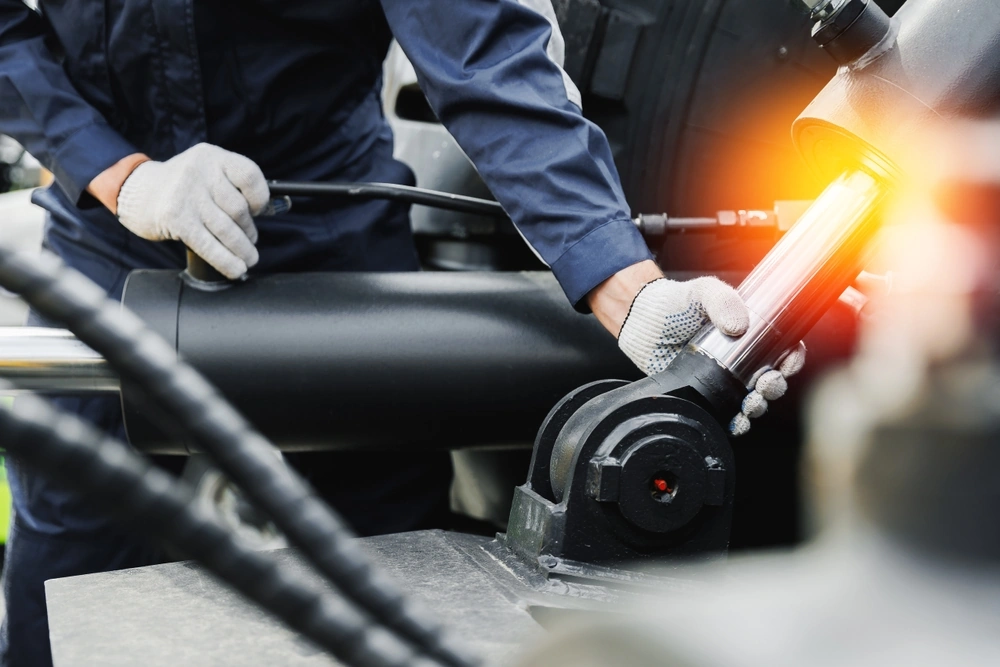Hydraulic systems are the lifeblood of machinery across Australia, from tractors on farms to presses in manufacturing facilities and conveyors in food processing plants. Even minor issues in these systems can quickly escalate into costly downtime, reduced efficiency, and safety risks.
At Taminda Hydraulics & Engineering, we specialise in full hydraulic system overhauls in Tamworth, restoring machinery to peak performance and reliability. In this guide, we’ll walk you through the warning signs that your hydraulic system may need attention, outline the step-by-step overhaul process, explore the benefits, and highlight the industries that gain the most from professional hydraulic maintenance.

Recognising early warning signs can save both time and money, helping businesses avoid unexpected disruptions.
Machines that repeatedly fail, even after small repairs, often have deeper hydraulic issues. Frequent stoppages during critical operations not only reduce productivity but also increase maintenance costs over time.
How Breakdowns Affect Operations
Repeated failures can slow production schedules, delay seasonal work on farms, or interrupt high-volume manufacturing. For example, a farm harvester that breaks down during peak harvest can directly impact crop yield and profitability.
A hydraulic system that struggles to maintain pressure or respond promptly may have worn components or contaminated fluid. Reduced performance can affect precision, slow down production, and increase energy consumption.
How Performance Issues Manifest
Leaks, contaminated fluid, and unusual noises indicate failing seals, hoses, or internal components. Ignoring these problems can lead to major failures.
Signs of Contamination
A full hydraulic system overhaul is a detailed, multi-stage process designed to restore efficiency and extend machinery life.
Before any work begins, our technicians perform a thorough evaluation of the hydraulic system.
System Analysis
Once the inspection is complete, the system is carefully dismantled to allow for a thorough assessment and cleaning.
Component Examination
All parts are meticulously cleaned to remove dirt, sludge, and metallic particles. Worn seals, gaskets, and hoses are replaced, and damaged valves or fittings are upgraded to meet OEM standards.
Importance of Clean Components
Clean, correctly reassembled components reduce friction and heat, improving efficiency and preventing premature wear. Coastal Australian environments require special attention to corrosion prevention due to salt-laden air.
Cylinders and pumps are critical to maintaining hydraulic power.
Cylinder Repairs
Internal cylinder surfaces, pistons, and rods are repaired or replaced to restore smooth operation and full pressure capabilities.
Pump Reconditioning
Pumps are refurbished to ensure consistent fluid flow and pressure output. Precision testing guarantees each pump meets manufacturer standards.
Hydraulic oil is drained and replaced with high-quality, climate-appropriate fluid. Filtration systems are inspected, cleaned, or replaced to prevent future contamination.
Preventing Future Contamination
After refurbishment, the system is carefully reassembled. Pressure tests, leak checks, and operational trials ensure the system meets or exceeds original performance specifications.
Operational Verification
A full hydraulic system overhaul provides far more than short-term fixes.
Refurbished systems regain power, responsiveness, and precision. This is critical for operations where reliability and accuracy are essential, such as automated production lines or agricultural harvesting.
Replacing worn components and restoring clean hydraulic fluid reduces internal wear, extending the life of machinery and maximising return on investment.
Reliable hydraulic systems minimise unexpected breakdowns, helping businesses operate smoothly during peak production periods. This can prevent costly delays in seasonal farming, manufacturing deadlines, or high-volume food processing operations..
Hydraulic overhauls are vital for multiple sectors across Australia.
Heavy use, rough terrain, and seasonal demand place intense stress on agricultural machinery. Regular overhauls ensure hydraulic systems remain reliable during planting, harvest, and other critical periods.
Practical Example
A fully overhauled harvester can maintain consistent attachment operation, preventing delays and protecting crop yield.
Hydraulics power lifts, conveyors, and automated processing lines. Overhauls ensure safe, efficient operations and help businesses remain compliant with strict food safety standards.
Operational Advantages
Hydraulic presses, lifts, and conveyor systems rely on precise, reliable hydraulics. A full overhaul prevents production delays, equipment damage, and costly downtime.
Example in Manufacturing
Reconditioned presses operate at correct pressure, reducing defects in high-volume production lines while maintaining workplace safety.
At Taminda Hydraulics & Engineering, we understand that a hydraulic system is more than just machinery, it’s the backbone of Australian businesses. By recognising early warning signs and performing a thorough, structured overhaul, we help clients restore efficiency, extend equipment life, and minimise operational risks. Investing in a full hydraulic overhaul is not just maintenance, it’s a strategic decision to ensure long-term reliability and productivity.